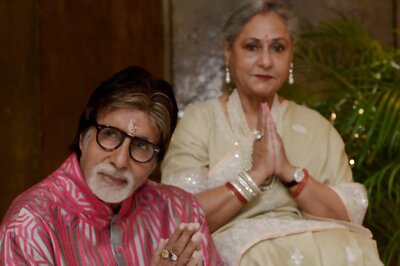
views
The Congress Working Committee constituted by Rahul Gandhi sees a clear tussle between the young turks and the old guards. After rejigging his national office bearers in a piecemeal manner, Rahul announced the CWC in one go, ending the six months wait since his elevation as the party chief late last year.
The message from the re-organisation of the highest decision-making body of the party is loud and clear. Sonia loyalists can continue to occupy their space but Rahul loyalists will call the shots. He undertook this exercise aiming to check the managerial culture in the party which has influenced decision making for nearly last two decades.
That is all fine, as the new party chief must have the freedom to pick his own team of trusted aides to run the organisation. But the timing of the decision, as it comes just ahead of decisive electoral battles in states and the Centre has baffled many within the party.
The prominent among those who failed to find place in the apex body of the party are: Sushilkumar Shinde, Digvijaya Singh and Janardan Dwivedi.
Shinde, the former union minister and Leader of the Lok Sabha in the UPA 2, has been the Dalit face of the party. Rahul’s decision could send out a wrong message in the key state of Maharashtra ahead of the Lok Sabha and the Assembly polls. The AICC is optimistic that the party would perform well in the elections through strategic alliance with the NCP and like-minded parties.
Digvijaya Singh, the two time chief minister of Madhya Pradesh and a prominent Thakur leader in the Hindi belt, is unlikely to take this humiliation lightly. And this could reflect in the ensuing Madhya Pradesh and Chhattisgarh assembly polls. Madhya Pradesh Congress is already a divided house.
Janardan Dwivedi interestingly was the one who had urged the then Congress president Sonia Gandhi to bring Rahul into the active politics at a time when the rank and file was strongly rooting for Priyanka to be her political successor.
Dwivedi had made this suggestion at a Congress Seva Dal ‘shivir’ and Sonia immediately backed his suggestion. As per the script, Rahul was made the Congress candidate for the Lok Sabha from the Amethi seat in the 2004 general election.
Another leader who is hit hard by the reconstitution is former Haryana Chief Minister Bhupinder Singh Hooda, whose known opponent and former Union Minister Selja has got a place in the new CWC.
AICC media department chief Randeep Singh Surjewala, who also hails from Haryana and was a minister in the Hooda government, is now a permanent invitee to the CWC. Kuldeep Bishnoi, son of former Chief Minister Bhajan Lal, who is also his known opponent has got a place as a special invitee. Apparently to mollify the senior Hooda, his son Depender has also been made a special invitee.
“Rahul is making experiment at a time when we have to fight a war,” says a senior party leader who felt the exercise of constituting the CWC is lacklustre, unenthusiastic.
The Congress’ currently lacks strong caste leaders and powerful regional satraps. Those seen well entrenched in their constituency were considered a threat and systematically sidelined.
The vacuum came after Dalits switched over to the BSP in the Hindi heartland, to the Dravadian parties in Tamil Nadu and regional parties in Andhra Pradesh and Telangana. Marathas shifted to the Sharad Pawar led NCP in Maharashtra and Brahmins and Thakurs have moved closer to the BJP. The upper caste in the Hindi-heartland has now developed a working political relationship with the BJP’s OBC vote bank.
Rahul brought in Karnataka Congress legislature party leader Siddaramaiah with a calculation that this could please OBCs in Karnataka but Siddaramaiah’s failure in the Assembly polls has weakened him in his own state.
The Congress President has decided to bite the bullet just ahead of key electoral battles. Rahul has time on his side. Many others do not. And politics is not about missed opportunities, but battles won.
The author is a senior journalist. Views are personal.


















Comments
0 comment